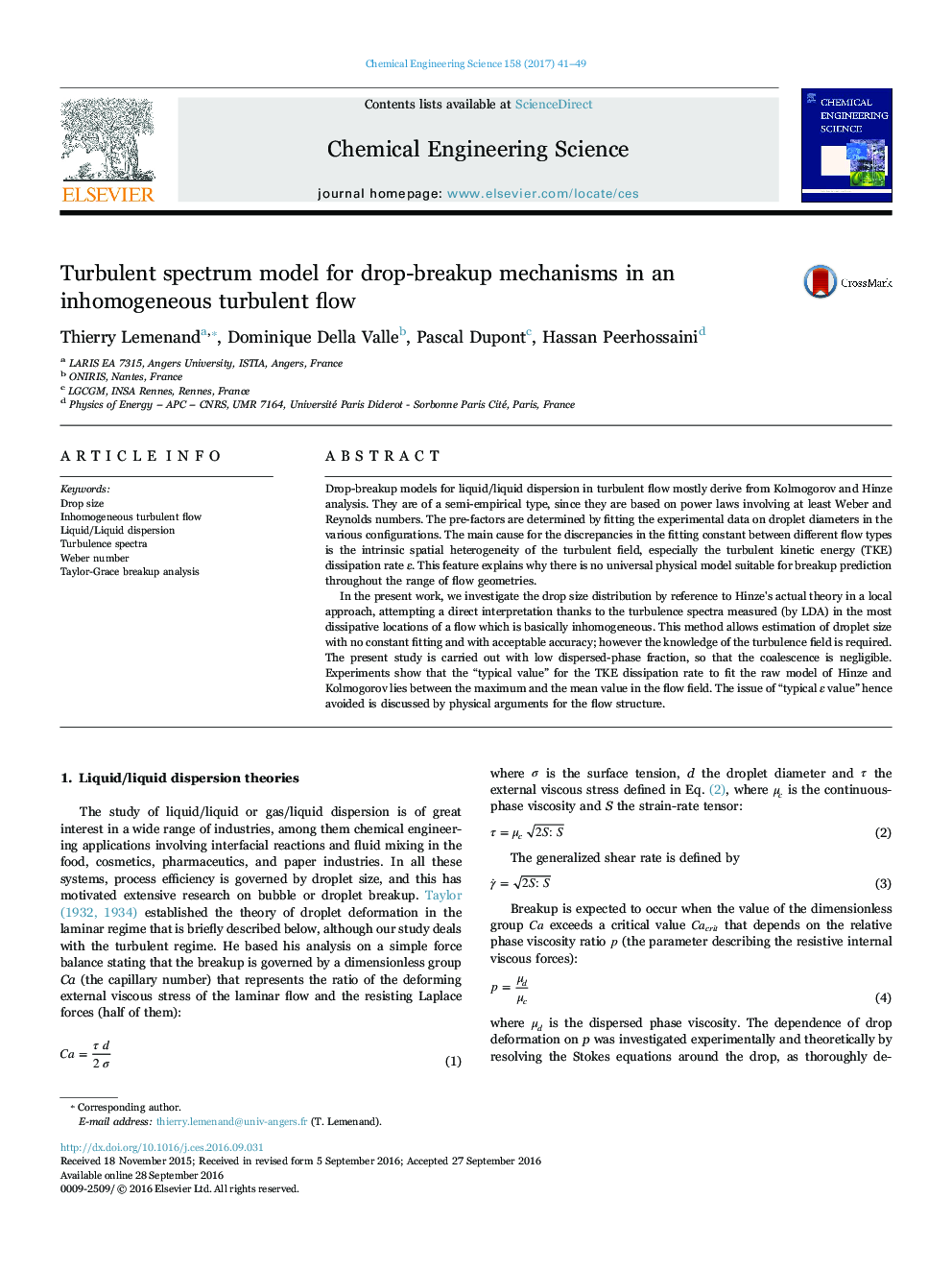| Article ID | Journal | Published Year | Pages | File Type |
|---|---|---|---|---|
| 6467902 | Chemical Engineering Science | 2017 | 9 Pages |
â¢We investigate the drop size distribution in a local approach.â¢This method allows estimation of droplet size with no constant fitting.â¢Experiments show that the “typical value” for the TKE dissipation rate lies between the maximum and the mean value in the flow field.â¢The “typical ε value” is discussed by physical arguments for the flow structure.
Drop-breakup models for liquid/liquid dispersion in turbulent flow mostly derive from Kolmogorov and Hinze analysis. They are of a semi-empirical type, since they are based on power laws involving at least Weber and Reynolds numbers. The pre-factors are determined by fitting the experimental data on droplet diameters in the various configurations. The main cause for the discrepancies in the fitting constant between different flow types is the intrinsic spatial heterogeneity of the turbulent field, especially the turbulent kinetic energy (TKE) dissipation rate ε. This feature explains why there is no universal physical model suitable for breakup prediction throughout the range of flow geometries.In the present work, we investigate the drop size distribution by reference to Hinze's actual theory in a local approach, attempting a direct interpretation thanks to the turbulence spectra measured (by LDA) in the most dissipative locations of a flow which is basically inhomogeneous. This method allows estimation of droplet size with no constant fitting and with acceptable accuracy; however the knowledge of the turbulence field is required. The present study is carried out with low dispersed-phase fraction, so that the coalescence is negligible. Experiments show that the “typical value” for the TKE dissipation rate to fit the raw model of Hinze and Kolmogorov lies between the maximum and the mean value in the flow field. The issue of “typical ε value” hence avoided is discussed by physical arguments for the flow structure.
